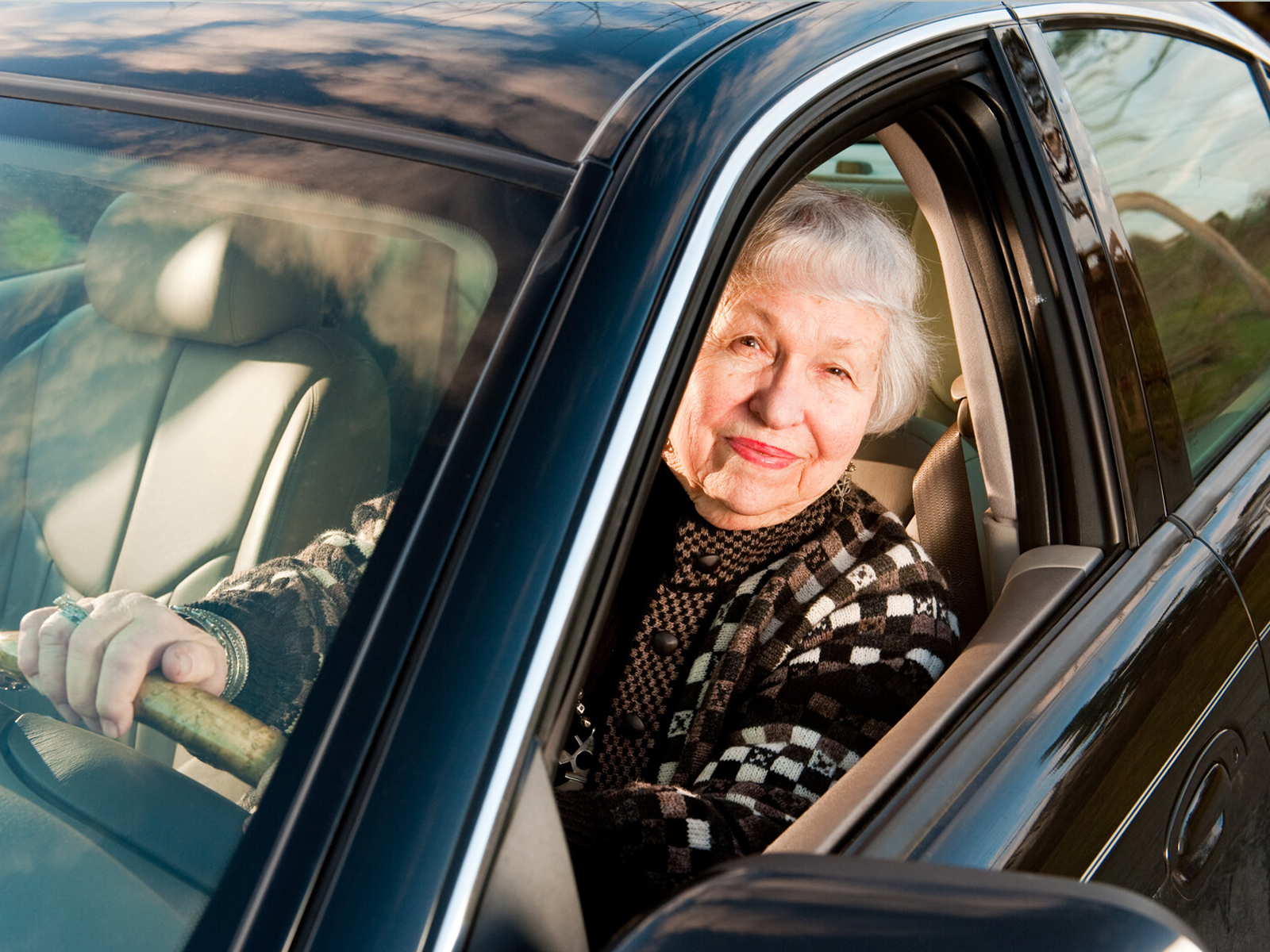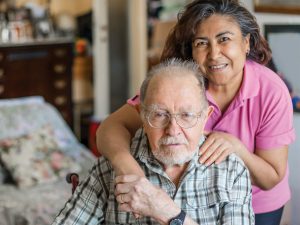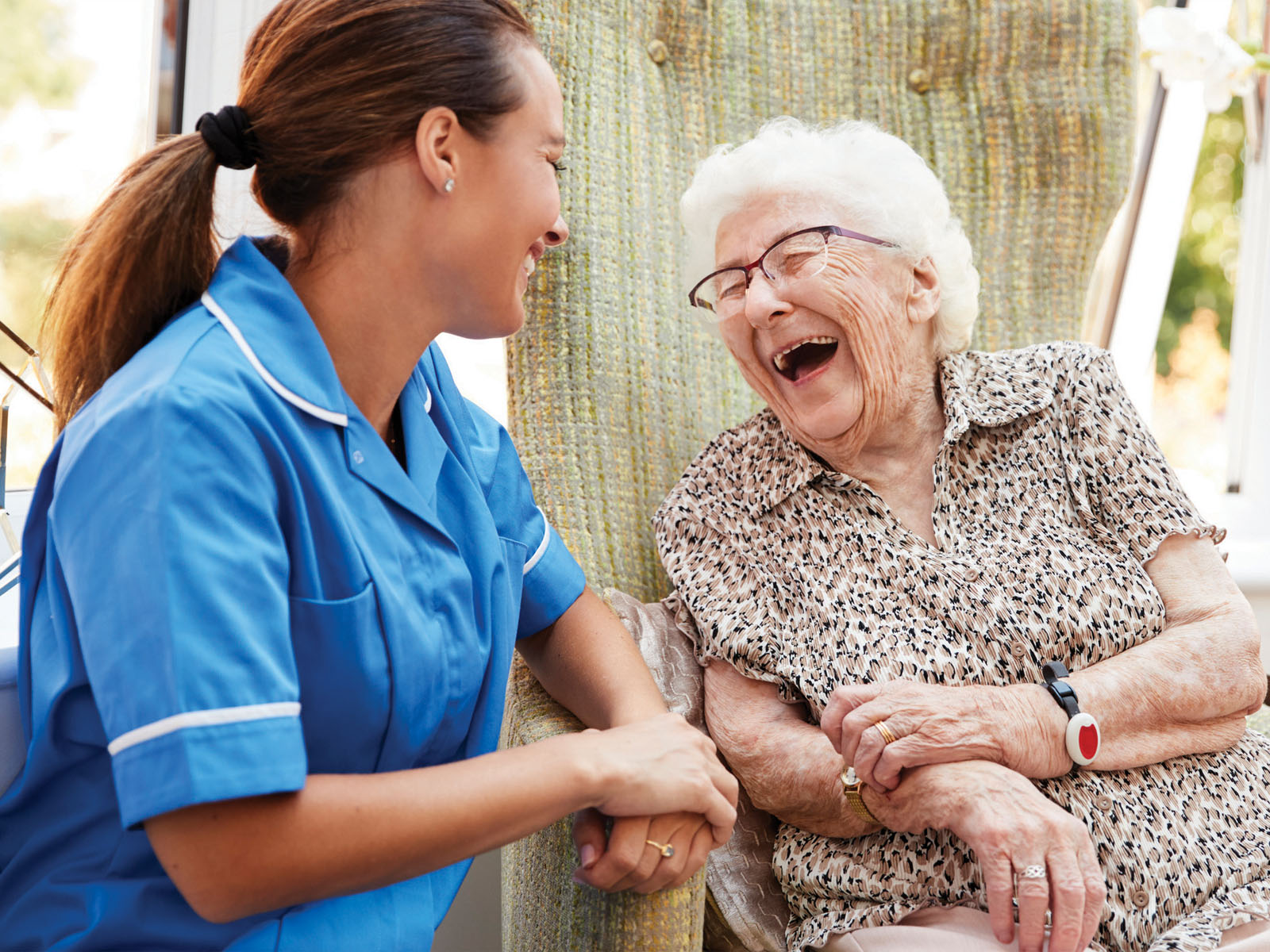Staying active and in touch with family and friends is a large part of maintaining both physical and mental health. For many of our older adults, maintaining an independent lifestyle and getting out and about with ease becomes a bigger challenge with age. Often, safety, fear of falling and fatigue are worries which lead to isolation. Sociability and peer contact, as well as the arrangement of suitable support services are often part of a family caregiver’s new responsibilities.
In this chapter, you’ll find information about how everyday living might change for your elder with a day to day activities, like driving, and meal preparation. Come along for the ride as we share ways to reduce risk while keeping bodies and minds sharp and active. Be sure to read on for a list of “101 Things to Do with Your Aging Parents” in the appendices of the book!
Continuing to drive
Safety and the older driver is a much talked about topic as insurers and families begin to get concerned about the number of elderly drivers in Canada
Driving can play a big role in the lives of older adults. It’s about freedom and independence – all the things that were the motivators for driving when they (and we) were 16. As many of us have noticed, some older adults on the road pose serious risks both to themselves and others. Now it’s not someone else’s mother slowing down traffic and making illegal left-hand turns – it’s yours.
A study of 165 elderly individuals suffering from some form of dementia revealed that over 80% of those involved in an accident continued to drive and close to 40% of these were involved in another crash.
What causes an older person to lose their skills? For many, the reason is strictly medical. Conditions such as Parkinson’s, Alzheimer’s and related dementias associated with advanced age can result in cognitive impairments. Stroke, a heart condition, or similar problems can also affect roadworthiness. More common factors associated with age, such as declining distance vision, reduced physical strength, slowed reflexes and even certain medications that are commonly taken (e.g., antipsychotics, antihistamines and some analgesics) are also culprits.
More often than not, the individual in question doesn’t realize that he or she has become a potential hazard. Unless there is a specific event where a loss occurs, changes from safe to poor driving behaviours tend to be gradual, over time.
“However, for older individuals, being able to drive is central to maintaining their independence so it’s difficult to encourage them to quit without a fuss,” explains Dr. Allan Dobbs, a researcher from the Northern Alberta Regional Geriatric Program in Edmonton and an expert in the field. His colleague, Lynda Dunal, an occupational therapist at the Baycrest Centre for Geriatric Care concurs. “For anyone who has been driving for 60 or 70 years, a car has much more meaning than a set of wheels. Driving is strongly tied up with a person’s sense of self. It means freedom, independence and mobility.”
Breaking the news: If you have a concern about your elder’s driving habits, Dr. Dobbs recommends taking a ride with the elderly relative you believe is at risk and watch for the signs. “Early warnings may be failure to yield right of way, making a left turn without looking, difficulty in back up or turning and slow response times. Any situations where other people responded by honking, or the traffic had to adjust, are early indicators of potential trouble.
“The loss of driving privileges is one of the most emotional and difficult issues for cognitively or age-impaired individuals” says Dobbs. Some will recognize their own failing ability and stop driving on their own because they don’t feel safe on the road. Others may feel their skills slipping but are less willing to give up. And, there are those who will sincerely believe that, regardless of the circumstances and warning signs, there is no problem and insist on continuing to drive.
The challenge is to help the driver realize how dangerous their driving has become and how much of a risk they’re taking. Talking may not work; showing will. Experts suggest you might want to follow the person while they’re on the road with a video camera to record and demonstrate how their driving safety has declined. Not a nice home movie, but one that may be quite effective once the embarrassment is over. If the problem continues, there are more drastic options families can use such as disabling or selling the vehicle to prevent its use.
Retesting for a fee: There are now a number of centres across Canada which offer re-testing services for a fee. For example, Dr. Dobbs has developed a computer-based test specifically designed for the cognitively impaired. Called the DriveAble test, it involves a touch screen computer test and a road test and is available across Canada. Many centres provide written report and optional remedial lessons and education when needed.
DriveAble Test locations
Vancouver (604) 921-3355
Edmonton (780) 433-1494
Calgary (403) 252-2243
Lethbridge (403) 317-1463
Toronto (416) 498-6429
Montreal (514) 733-1414
Laval (450) 688-9550 ext. 4435
When its time to take away the keys
Fortunately, experts have some proactive suggestions for family members with elders who shouldn’t be on the road.
• Involve others in a position of authority, such as a family doctor or occupational therapist, to deliver the message.
• Encourage a re-test from the local government authority if there is any doubt.
• If possible, make it a gradual process by reducing night and highway driving.
• Be honest and fair, recognizing that this is a difficult process.
• Try to ensure that other options of transportation are readily available and affordable.
• Sell or disable the vehicle.
• Know you’re emotional, know they’re scared
When Seniors Drink
Sadly, the number of elders who use alcohol to deal with grief and loneliness is on the rise with many families caught off guard when they find out. Identifying the problem is difficult and many of us are pushed away or lied to when we ask questions. Oftentimes, family members hesitate to interfere – even when mishaps or falls at home are too frequent or multiple car accidents become cause for concern.
Some elders might have what is called late-onset alcoholism, a new drinking problem that is not easy to spot. Families are often unaware of growing alcohol consumption. They attribute his confused, forgetful behavior to normal signs of grief and aging and his bruises, aches and pains to old age. Although this is a serious concern for many, the good news is that late-onset drinkers are more stable and respond better to treatment than “lifetime” excessive drinkers.
To make matters worse for elderly drinkers, some people tend to ignore or shun older people who have drinking problems, leaving them to their own devices with a “let them enjoy the time they have left approach” to the problem. Others try to keep them happy or make them feel included by serving them drinks at get-togethers.
Does alcohol affect older people differently?
The effects of alcohol vary with age. Slower reflexes and response times, vision and hearing impairment, and low tolerance to alcohol’s effects put elders at higher risk for car crashes, falls, and other kinds of injuries that may result from drinking.
Mixing alcohol with medicine can be fatal. Older people usually take more prescription and over-the-counter medicines than younger people, which puts them at a high risk if they do consume alcohol.
Needless to say, many therapists and nurses are reluctant to work with older alcoholics or heavy drinkers as they already have their hands full with daily care and treatment plans without the “extras” that come with a drinker (e.g. medication reactions from drinking on top of taking a number of prescription meds, increased soiling, verbal or physical abuse, lack of motivation, increased physical challenges, mental deterioration, etc.).
What To Do?
Don’t contribute to or facilitate drinking. Be aware and watch for early warning signs. The truth is that with alcohol and other drug problems, as with other kinds of acute and chronic illness, early recognition and treatment intervention are essential – and rewarding. Ask for help – there are treatment programs and support programs available in most communities. Of note: Be sensitive to the conditions that outside caregivers are facing when caring for your elder.
How to know if someone has a drinking problem
Not all problem drinkers drink every day and not everyone who drinks regularly has a drinking problem. If an elder you care for has the following symptoms, you may want to look into getting some outside counseling and support:
-A significant life event that triggers excessive alcohol use
-Little interest in food
-Trying to hide or lie about drinking habits (secret drinking)
-At risk of or actually hurting themselves or others
-Gulps down drinks to calm nerves, forget worries or reduce depression
-Feels irritable, resentful, or unreasonable when not drinking
-Has medical, social or financial worries caused by drinking
-Prior history of drinking and/or treatment
Be passionate and patient – but be willing to act. Persons with drinking problems have the same needs as others – food, shelter, clothing health care, social contact and the need for self-confidence, self-worth and dignity. Experience proves that preaching doesn’t work. A nudge or a push shows that you care – especially when the person must choose between losing their family and going to treatment. You may not be able to cure the illness, but when the crucial moment comes you can guide the person to competent help.
Beating the Stress of Meal Preparation
How do you ensure that those in your care are eating well? As a busy caregiver, you may not have the time to prepare meals in advance or be home at mealtime. Voila! Meals on Wheels or the ‘Diners Club’ program may be your elder’s ticket to improved nutrition!
When pizza deliver and other take-out options just don’t cut it, “senior friendly,” inexpensive and regularly available Meals on Wheels hand delivers home-style hot meals or frozen entrees for convenient re-heating right to the kitchen table.
Partially subsidized by provincial Ministries of Health, local service clubs, and donations from clients, volunteers and corporate sponsors, Meals on Wheels is a service that is considered affordable for most seniors. This community service provides home delivery of meals to anyone in need. Generally, referrals are accepted directly from individuals themselves or from relatives, neighbours, social workers and health-care professionals.
Friendly, reliable volunteers are the backbone of such non-profit programs. Across Canada, thousands of people from all walks of life generously give their time to deliver nutritious meals and cheery smiles to independent seniors at lunchtime.
It does a body good!
Amply covering the four food groups, Meals on Wheels lunches/dinners offer 25% to 40% of the recommended daily nutritional intake. “Hot”’ meals are usually comprised of soup, an “entrée of the day,” bread, beverage and dessert, but the menu may vary from community to community.
Accommodations are made for specialty diets such as clients who are vegetarian or diabetics with strict restrictions. For instance, Meals on Wheels in London, Ontario has an extensive 22-day meal rotation, as well as a daily meal alternative for those “extra-picky” eaters. Their motto: as long as they eat!
There may not be a pickle on the side, but convenience and worry free meals might just be your ticket to not worrying about your loved one’s lunch while you’re at work. There’s also security in knowing that a friendly volunteer will check on your parent’s well-being on a delivery day and will respond quickly if an emergency arises.
Diners Club Luncheons: double the service, double the fun!
Who ever said only millionaires have chauffeurs? Picked up right at your front door by a volunteer, Meals on Wheels Diners Club participants enjoy a satisfying full-course meal, lively entertainment, and friendly chitchat.
For many seniors and their families, the thought of leaving the security of home initiates safety and health concerns, as well as fears of embarrassment. Many wonder:
• What if my asthma kicks in and I’m nowhere near my medication?
• What if I experience chest pain on the bus and I can’t get to a hospital?
These concerns often restrict activity and lead to social withdrawl. The thought of a friendly Diners Club volunteer who picks you up right at your door and whisks you away for a few hours of leisurely conversation and a good lunch is reassuring. Diners Club is not available everywhere, however. Contact your area Meals on Wheels organization via the Provincial Ministry of Health or senior’s centre to find out if Diners Club is available in your community.
Here’s what Meals on Wheels or similar service have to offer your family…
• Home delivery – no need to worry about going out to shop
• Flexibility and choice – you decide what program and meal delivery schedule best suits your lifestyle
• Convenience – home delivered, ready to eat
• Safety – avoid the risk of kitchen related accidents
• Social contact – meals are delivered one smile at a time
• Nutritious food – a variety of menu choices and special meals
• Short term service – for seniors recovering from surgery or other temporary problems
• Deliveries – Monday to Friday between 11:00 a.m. and 1:00 p.m.
Who qualifies?
Take this test to determine if the person you’re caring for is a candidate for Meals on Wheels. Residents who, due to illness, disability or advanced age, lack of adequate cooking facilities and who are unable to prepare hot meals for themselves may qualify. Also, home-dwellers must be willing to accept the service and able to pay a nominal fee for their meals.
Eldercare Situation |
Points |
| Is there an illness or condition that changes the kind and/or amount of food eaten? | 2 |
| Are less than 2 meals eaten per day?
(A meal consists of food from at least 3 of the 4 food groups) |
3 |
| Are milk and/or milk products consumed less than twice a day? (Examples of one serving: 1 cup milk, 3/4 cup yogurt, 50 grams cheese) | 1
|
| Are fewer than 5 fruits or vegetables consumed per day? Examples of one serving: 1 potato, 1 medium banana, 1/2 cup juice, 1/2 cup vegetables | 1
|
| Does the person you care for have 3 or more drinks of beer, liquor or wine almost every day? | 2 |
| Are there tooth or mouth problems that make it hard to eat? | 2 |
| Eating alone most of the time? | 1 |
| Are 3 or more different prescribed or over-the-counter drugs taken per day? | 1 |
| Without wanting to, has someone lost or gained 10 pounds in the last six months? |
2
|
| Are they sometimes unable to obtain groceries or prepare food? | 2
|
| Total points for your elder’s nutritional score |
|
If your elder’s nutritional score is:
0-2 POINTS: There’s a low nutritional risk. Meals on Wheels is not really needed at this time.
3-5 POINTS: Consider the nutritional risk moderate. Meals on Wheels might be provided at this time, and other available community services/supports should be reviewed. Recheck nutritional score in 3–6 months.
6+ POINTS: This person is at high nutritional risk. Meals on Wheels should be requested daily. Suggest referral to doctor, dietitian or other qualified health professional as well. Other community services/supports should be immediately reviewed and the nutritional score rechecked in 3–6 months.
Exercise to keep fit
The value of exercise has no age limit, and a lack of activity at any age is not good.
Changes that occur with aging can include weight gain or loss, weakening of muscles and loss of flexibility. Experts agree that physical activity helps maintain a youthful lifestyle, prevents and delays certain diseases and even improves current symptoms. The bottom line: being fit reduces the risk for falls and injuries, helps with better sleep, more energy and regular elimination. At the same time, getting moving enhances mood, and relieves stress and depression.
According to Health Canada, it’s best to aim for 30 to 60 minutes of physical activity a day. As a caregiver, it might be hard to fit this level of exercise into your busy work-life juggle, so try combining some manageable exercises with a visit to mum and dad. There are three types of exercise we all need: endurance, flexibility and strength, and balance.
Endurance activities should be practiced four to seven days a week. These include activities like walking, cycling, skiing, dancing, skating or hiking, which are great for your heart, lungs, circulation, muscles, increasing energy, and in some cases even improving chronic diseases and their symptoms. Remember to wear comfortable, supportive footwear, and as your capability improves, increase activity.
Flexibility activities of some sort, like stretching, gardening, cleaning, golf, yard work, yoga or bowling, should be practiced every day. This will help you increase your independence and ability to tie shoes, clip nails and get in and out of the tub.
Strength and balance activities should be done two to four times a week, and can be part of your routine, like carrying groceries, laundry, piling wood, lifting weights or soup cans, wall-push ups or even weight-training classes. These daily activities will increase strength, enabling you to do more, decrease risk of bone breaks, improve balance and prevent falls and injuries, even in your 90s. Remember not to hold your breath while lifting and start small with objects you can comfortably lift in repetitions of 10.
Whatever works for others
Suggest that they start with reasonable expectations and build. Ask yourself or think about your parent’s situation and estimate whether inactive, mildly, moderately or very active is the best descriptor. Get some advice, talk to a fitness expert or physiotherapist in conjunction with their family doctor before they begin any exercise routine. Discuss whether the motivation and social aspect of others would be more fun and look for classes in your local community centre. Group fitness doesn’t have to be carried out in a class, either. Many malls have walking programs for young and old. Your elder can do a video exercise break at that bridge game or start a walking club with their friends. It’s whatever works for them. Experts suggest that every moment of movement is beneficial, so even gentle movement will improve range of motion and level of ability as well. If your elder’s in no condition to jump up and join a formal class or head to the gym consider light chores or chair aerobics as a beginning point. The best exercise plans are built slowly and are most helpful if they are consistent over time. As their confidence builds, there may be an opportunity to add some variety to their routine. If they miss a day, tell them not to give up; just start again tomorrow. Unless their doctor recommends otherwise, there are few reasons why you and your parent can’t exercise.
Top 10 exercises to share with a parent
1) Aqua fitness
2) Walking
3) Dancing
4) Yoga
5) Swimming
6) Golf
7) Chair aerobics
8) Bowling
9) Gardening
10) Shopping
Exercises for the elderly
Exercise safety tips
• Check with a physician before you or your parents start exercising.
• Wait two to three hours after a large meal before exercising.
• Avoid exercising in extreme temperatures, hot or cold.
• Always warm muscles with slow walking, and then stretching without strain.
• Drink plenty of water.
• Use safety equipment, like kneepads or a helmet.
Source: The Encyclopedia of Health and Aging
Your parent may be reluctant to participate at first but don’t let up. Just as with kids, once they get started, they tend to adjust and start to love it. Exercise classes offer light aerobics, yoga, aquafit, ex-and flex and simple stretches. From what I’ve seen these classes provide a simple, pressure-free environment without too much emphasis on speed or flexibility. Certainly there’s not the youthful panic about what to wear and daytime classes are usually possible. There’s often music which is uplifting, others elders attending from outside the facility and positive young people and students around to lead and participate in classes.
In a wheelchair? No problem. Wheeling is as beneficial as walking and a number of classes and moves are adapted for seniors that can be done while sitting in their chairs.
Arthritis aches and pains? Keep moving to avoid stiffness, by walking, dancing or doing Tai Chi.
Osteoporosis? Adapt strength programs to a manageable level without straining. Challenging bones and muscle is important for strengthening and preventing falls and breaks.
What about heart or stroke problems? Check with a physician. Most doctors recommend activities like walking or dancing because they stimulate circulation, improve heart health, energize muscles and strengthen lungs.
Not so steady on your feet? Start with exercising on a bed, in a chair or against a wall until you have enough balance for other things. Exercise will improve balance over time.
Afraid of ice and snow? Get boots with cleats, join a mall-walking club or work out indoors during the winter at a local community center or YMCA. Seniors in the community are often invited to attend exercise programs at local long-term care facilities or homes.
Memory – and those senior moments
Is losing one’s memory a normal part of aging? Whether it’s forgetting where you put your keys or whether you locked the front door, it’s natural to be concerned or frightened. Yes, there are changes in the way memory works that are a normal part of aging,
Memory begins to slip in middle age and continues to decline, especially after age 75. In older adults, long-term memory tends to go unchanged, while short-term or working memory tends to slow down.
One of the changes identified throughout the literature is that memory becomes more accurate with age. Information may be processed at a slower speed, but there may be some silver lining found with slower processing. After all, isn’t wisdom more a function of accuracy than speed? As we age, we have more information to sift through before we can recall the greater awareness of nuances, shades of gray, or alternative perspectives. The wisdom we acquire through aging allows us to see things from a wider perspective. We have more internal data to bring into our working memory for comparisons before final decisions are made. Did you know that older adults have been shown to have a greater sense of understanding of these subtle qualities of life than younger adults? Research has shown that if an elder is in an environment in which they must keep their mental skills sharp, they are probably more likely to retain memory skills as well.
Use it or lose it
In, The Memory Workbook, authors Mason and Kohn aptly emphasize the need for us to recognize and accept that memory is imperfect at any age. They compare the aging memory to an out-of-shape muscle, debilitated by years of flabby thinking habits, that needs to be exercised and revitalized with a new regimen of skill building and positive attitude development. After all, there is truth to the aphorism “use it or lose it.” The brain is like any other part of the body in its need for exercise, and we need to find new ways to flex its capacity to remember.
Later life changes in memory may be bothersome, but they are not debilitating. We must change the false presumption that we lose the capacity to remember as we age. To compensate for the natural changes in your memory, you must take your attention off of autopilot and place it on manual. We must help to manually move the information from working memory into long-term memory.
Improving Memory
Often an elder’s memory can be improved by relearning how to focus their attention, eliminating distractions and practicing good recall skills. Don’t embarrass or blame. Simply offer memory-improving strategies for both of you to do together. If they are motivated you tend to pay more attention. Mental exercise is as important as physical exercise. There are fun ways to stay on the ball. Board games such as backgammon, chess or checkers provide mental situation and require focus and thinking ahead to anticipate next moves. Crossword puzzles and card games also require recall and transfer of information from long-term to short-term memory.
Lifestyle changes such as retirement, moving, grief, financial challenges as well as medical conditions add to our list of things to watch for that will affect your elder’s ability to remember. Keep an eye on these causes:
Nutritional efficacy: Adequate food and fluid intake are important to good health. Shortages of essential nutrients such as B vitamins, especially riboflavin, carotene, zinc and iron may impair memory. Foods known to enhance memory include “brain foods” such as red meat, eggs and liver, rich both in iron and zinc. Because these foods are high in cholesterol and fat, many older persons avoid them. Also, older persons often have esophageal weaknesses that make swallowing meats difficult or impossible. Try pureeing foods for easier ingestion. Poor-fitting dentures or missing/diseased teeth and gums also interfere.
Drug Interactions: Many medications commonly prescribed for older adults cause memory deficits, especially in individuals with low body weight, a history of allergies or a need for multiple medications.
Divided attention: Concentrating on more than one thing at a time is often a challenge for elders. Multiple conversions or competing activities/background noise may interfere with memory. For example, during a visit to the family doctor of denotes, the elder may just want to ask several questions and will have difficulty refocusing thoughts to answer other questions.
Information retrieval: It may take quite a while for an elder to retrieve information. Slower recall may be attributed to poorer organization of information in the long-term memory. Memory-training techniques that encourage use of more efficient mental organizational skills appear to be beneficial.
Low blood Sugar: Over exercising or skipping meals can cause blood sugar to dip. Glucose is needed for memory storage. According to researchers, memory may appear clouded if blood sugar is low.
Stress, anxiety or depression: Too much stress or pressure, especially when setting priorities or dealing with multiple issues can cause individuals of all ages to experience memory loss. Grief and loss may lead to depression as well as changes in marital status, home life and work. Often when elders are isolated decision-making and change becomes inwardly focused with less input from external and environmental influences. This can add unnecessary and lengthy worry and fussing.
Illness: When the body is not functioning well, physical inactivity or illnesses can lead to memory loss. Existing diseases that are common contributors to memory loss include infections, anemia, thyroid conditions, kidney problems, strokes, emphysema, heart disease, Parkinson’s and strokes. Liver and kidney ailments as well as dehydration can also affect memory function. Both over-the-counter and prescription drugs can cause drowsiness and confusion and interfere with a person’s ability to remember. Be aware of anti-hypertensives, barbiturates and anti-diarrhea medications and pain medications that induce sleep. Elders experiencing pain can have more problems paying attention due to this distraction.
Dementia: Degenerative brain disease can result in irreversible decline in thinking, memory and behaviours. This is often slow onset and patients may have difficulty remembering recent events or performing familiar tasks.
Helping someone remember
While the process of remembering takes more time, memory is still easily jogged. Many persons who experience a mild memory loss can significantly regain memory function again through memory training. Here are some suggestions you elder can follow:
1) Listen carefully and take time to remember
2) Think about what it is that is to be remembered
3) Repeat it out loud
4) Link new things to past memories
5) Practice using the new information
6) Write it down and keep it close by
These techniques are simple and easy to do. Want to learn more? Look into memory training techniques including association, visualization and observation.













